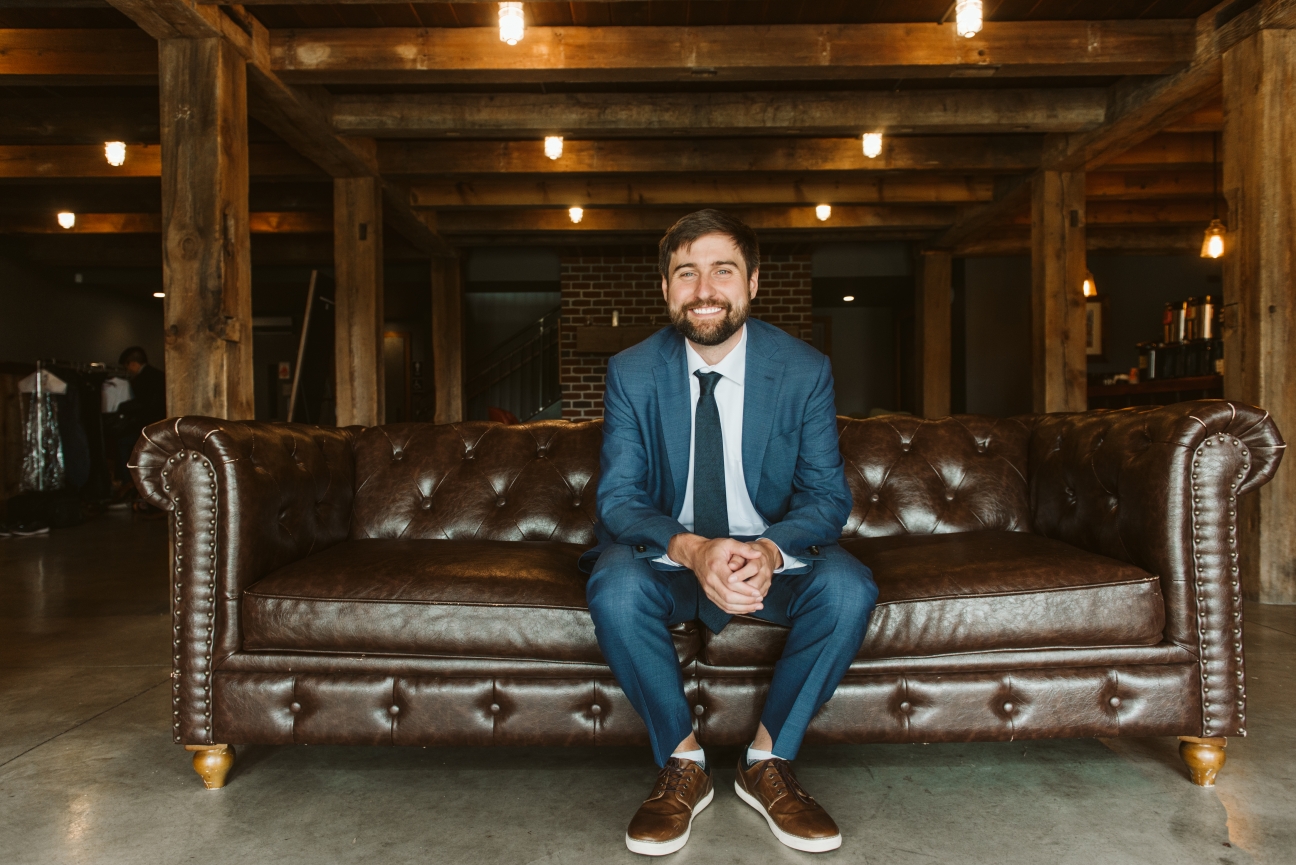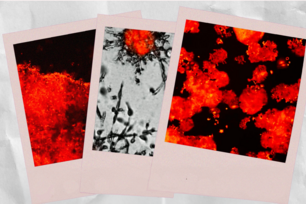
Jean Smith photography
Meet a Whitehead Postdoc: Eric Smith
Eric Smith is a postdoc in Whitehead Institute Member Iain Cheeseman’s lab studying proteins involved in cancer. We sat down with Eric to learn more about him and his experiences in and out of the lab.
What are you investigating?
I'm working on trying to understand how cancer cells can alter the proteins they make to support continued cell division. When proteins are made, they are translated from an mRNA. What you learn in all biology and biochemistry classes is that this translation starts at a certain sequence, AUG, but there actually are proteins that are translated from other start sites. Those proteins have generally gone undetected because we usually only look for the protein that forms at the known start site, and we ignore the signs that there may be other versions. However, those other versions could actually be doing something important, either in normal cells or in cancer cells, and I’m interested in what they could be doing. I want to understand how a variant of a protein that maybe is made slightly differently, would, for example, have some other function in cancer cells that helps them continue to divide. Cancer cells often grow in tough conditions, and so they may be using these variant proteins to adapt and survive.
What did you want to be as a kid?
I wanted to be a professional hockey player. I grew up playing hockey; I started when I was about six. I saw the Mighty Ducks, and thought: I want to play hockey. I'm from a suburb just north of Detroit in Michigan that's kind of a big hockey town. Canada's just across the Detroit River, so we went to Canada a lot and played there. I didn’t make it as a professional, obviously, but I do still play today.
When did you become interested in a career in science?
I have always been interested in how things work. When I was a kid, both my dad and my grandfather would always have us help fix things. My grandparents have a boat, and we'd fix the engine all the time. When I started undergrad, I wanted to be some sort of engineer, like I was broadly interested in mechanical engineering and chemical engineering. Then when I took my first organic chemistry class, I thought it was super cool. That led to me learning about biochemistry, and I switched from engineering to biochemistry. What drew me to structural biology and biochemistry is the idea that you can look at these little machines inside of cells and try to understand how they actually work.
What led you to the Cheeseman lab?
After I finished my PhD, I did a postdoc at Northwestern University. I was there for about three years purely doing structural biology, which I still love, but it's hard to only try to solve protein structures because it's very hit or miss. Also, I've always been interested in taking a step back and looking at major cellular processes. My wife, Sheri, came to Whitehead Institute, and so we were living apart, long distance. We were trying to find a way to live together, so I was looking at labs here, and Iain's lab stuck out to me as one that takes these very different approaches than I had used in the past, as well as some similar approaches to those I had used in grad school, to go beyond looking at single proteins and try to understand cellular processes on a larger scale. That’s a major reason why I chose to come. Then, also, Iain and everybody in the lab are just great.
Your wife, Sheri, is also a postdoc at Whitehead Institute. What’s it like working in the same place?
It's nice to be able to spend time together in the middle of the day, eat lunch together, and ask “How's your day going?” Especially because we both play a lot of sports—different sports—after work, and so otherwise we don’t always see each other until late in the evening. It's also nice when something goes wrong that I can take a short walk and have somebody supportive to chat with. Work-life balance is hard as a postdoc, and so it’s great to have someone who understands when you say, “Something in the lab didn’t go the way I thought, and so I’m going to be here for two more hours.” Someone who understands the ups and downs of doing research and the things that come along with that.
Where do you see yourself in ten years?
Hopefully I'll be running a lab and using my structural biology to understand small molecular details about how proteins work, and then marrying that with what I'm learning here in Iain's lab to take a step back and look at how those proteins are playing a part in some major cellular process.
What are your hobbies?
Well, I actually really like being in the lab. It’s fun and it’s probably what I’m most passionate about in life. Then, as I said, I play hockey, and I really like that because it's very fast so you can't think about anything else. It helps to take a little bit of a break and give my brain a break too. I also love skiing and golf. We have a dog, and I love taking him on walks. He likes to play ball and things like that. Also, cooking is very therapeutic to me. It's like science that you can be a little sloppy with. In my mind, they're similar in that in cooking you do mise en place, you get all the ingredients ready, and then you follow a recipe. In science, you organize all your reagents and then you follow a protocol. But then with an experiment, you have to be ultra-focused, be consistent, and make sure things work. When you’re cooking, you can turn off that part of your brain, and just toss things in. It’s low stakes—although, I guess you do have to eat it at the end.
What do you like to cook?
I really like making different risottos; my favorite is probably a lemon pepper one. Then sometimes I make arancini out of it, so it’s a nice double meal.
What’s the biggest disaster you’ve had in the lab?
Between undergrad and grad school, I worked in industry for about two years. I was purifying natural products, and I had to get rid of the buffer that this product was in. The way we do that is called rotovapping, which is when you have this big round-bottom flask and you stick it to a huge machine with a high vacuum and it spins. The machine is cold but the sample itself sits in a warm water bath. So when it was done, I was trying to pull the flask away from the vacuum and it was stuck. Finally, I pulled too hard and it smashed against the back of the water bath and broke the glass, and ruined about $15,000 worth of this product that we were purifying to sell to a customer. That was a tough call to my boss.
What’s the coolest thing you’ve ever seen in the lab?
During my first postdoc, when I was at Northwestern, I was trying to solve the structure of this ten-protein complex but it kept falling apart. When you do electron microscopy, you're looking at images on a grid, and you can kind of see the size of things and so I could tell it kept falling apart. Finally, I thought of doing something that was a little out of the box, and it got the complex to stay together. When I looked at the image and saw that it had worked after about a year of trying, that was one of the coolest things I’ve seen because I honestly never thought it would work. I thought I was just going to keep banging my head against the wall. To see that you can go through trial and error, and try different things, and then actually have the experiment work, that was really cool.
Contact
Communications and Public Affairs
Phone: 617-452-4630
Email: newsroom@wi.mit.edu


